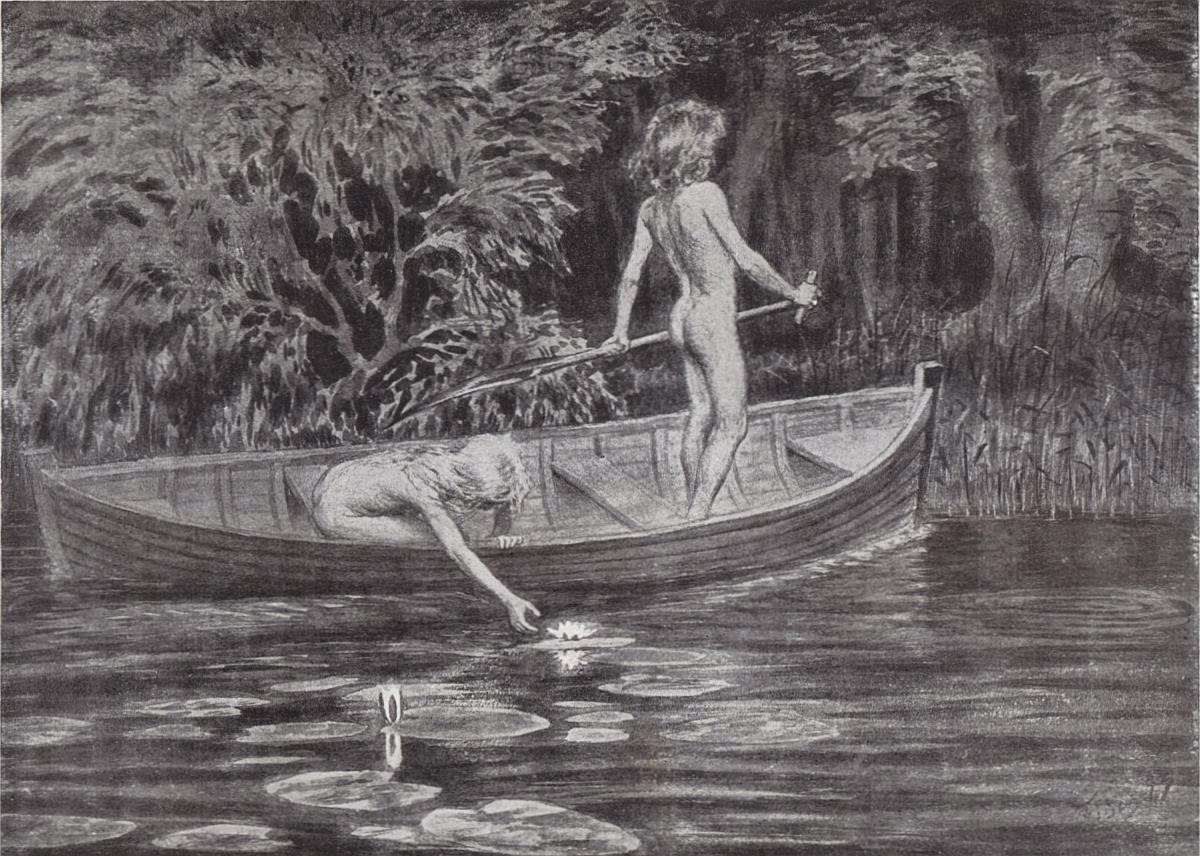This is a lovely book which I have had before, but not for a while now, so I was delighted to acquire a copy again today. Song of a Boy by John Holland (Privately Printed, London: 1939) is a mother's tribute to her dead son. It is an anthology of John Holland's youthful poetry and painting, youthful because he died of Polio three years before this book was created at the age of eighteen. It is a beautifully crafted book printed on laid paper, with colour reproductions of John's paintings, each protected by a tissue guard with the title and size printed onto it and all bound in cream buckram with one of John's paintings rendered in gilt on the upper board and then slipcased. Truly a lovely thing. Also included are three likenesses of John (below). The pastel drawing is by P. Harland-Fisher made when the subject was 12 years old and the two photographs were taken with his dog at the age of 13 and on horseback at 17. John Holland was the only son of Phyllis and Rear-Admiral Lancelot Holland and, as you would expect and understand, the praise for John's youthful talent is high indeed in the short preface to the book. Nonetheless, in this instance, the high praise seems highly justified. Granted that these poems were written from the age of fourteen onwards and have moments of unevenness, it is clear that John stood every chance of being a formidable poet had he been given the chance to find his mature voice. Sadly, that was not to be and so we are left with just this beautiful book as a memory of his passing. Which is made all the more poignant by the opening lines of the strangely prescient opening poem from which the collection takes its title,
"Song of a Boy"
What have I done or left behind,
God, if I were to die this day
What thing of beauty could men find
To show that I had walked my way?
No good behind me and no sin,
No pearl of beauty fine and rare,
No simple song, not anything
For which another man might care,
Oh, what would future humans say
If in my youth I died this day?
Yet I have lived and seen and known
And yet if I did die this hour
My strength and knowledge would have flown
Before the bud could burst to flower,
Before the flower could turn to seed
To grow upon the barren ground.
I have not done one single deed
For which I then would be renowned
Oh, lost would be my gifts and power
If I were now to die this hour.
Some day perhaps some one will find,
One of my songs, swift time has left behind
And in that song, that man perhaps may see
A little corner of what once was me.
Perhaps a petty wish, a sudden fear,
A stroke of ink wet with a lover's tear.
Some simple thing that once my spirit saw
And find through it that men have lived before.
Clearly his obituary notice in The Wykehamist can't be far wrong when it said, "His single-hearted devotion to beauty in nature, art and literature, and still more his courageous independence of mind, will long be remembered by the many friends who had watched the development of his rare and ardent personality."
PS. A small bibliographical note for any who might find this post because they are researching to catalogue their own copy. There is a lithographed facsimile of John's signature in orange ink on the first page of the book. This is NOT as some internet sellers have it, a book which is "signed by the author" - clearly so, you would think. Nor is this signature drawn by a crayon by another hand as others have it. The signature is the same in all copy and is a printed facsimile.






























































































